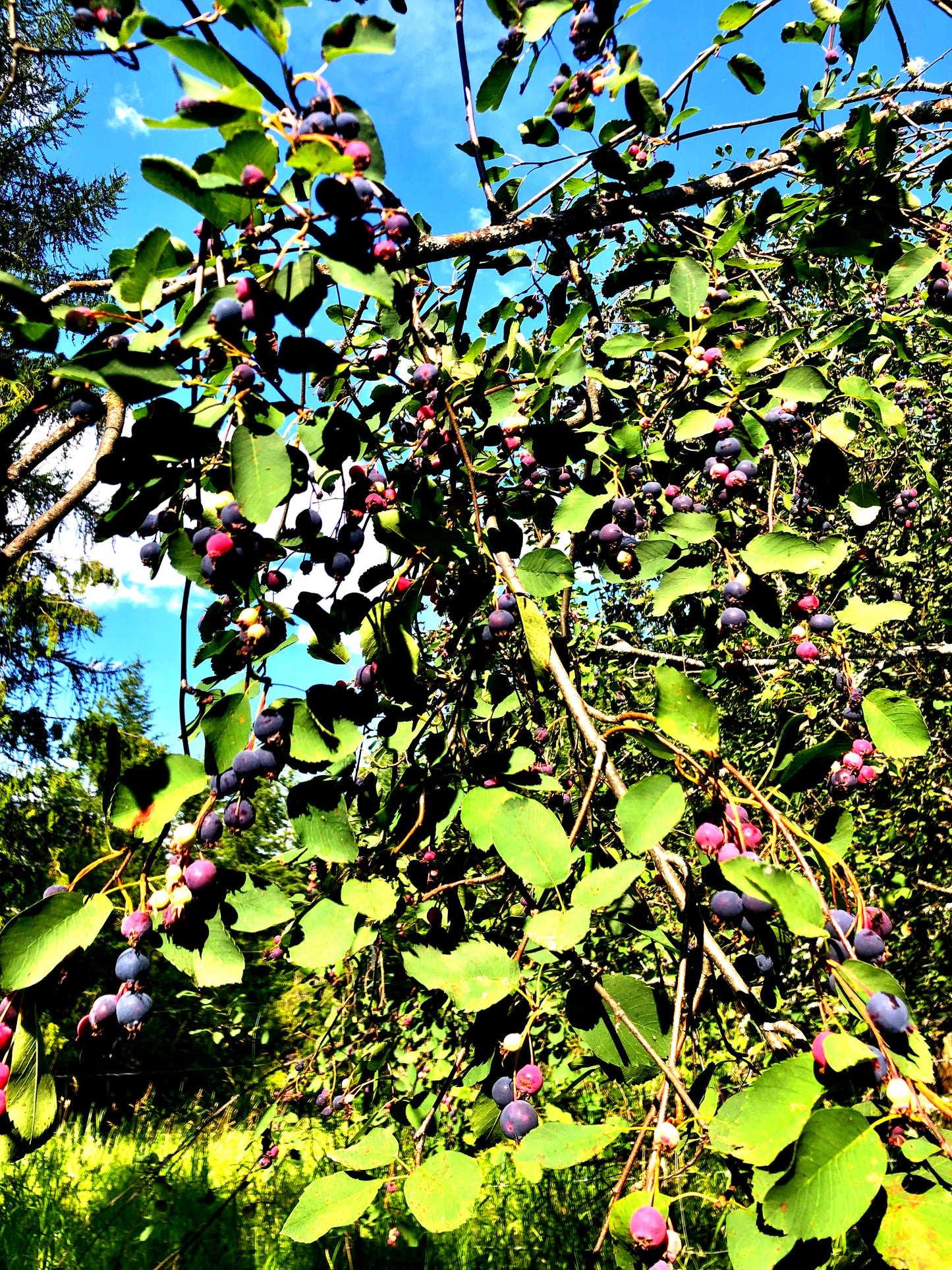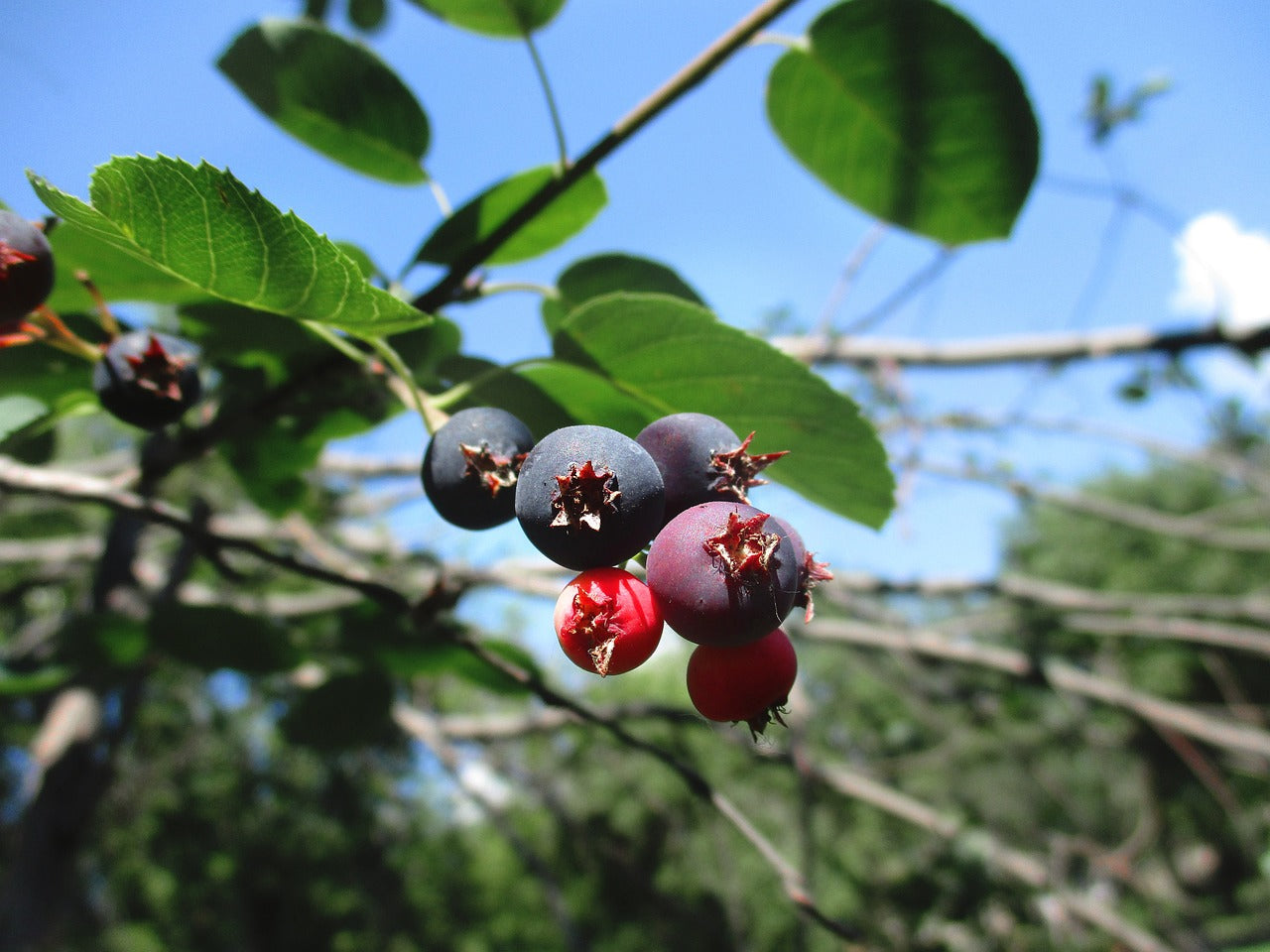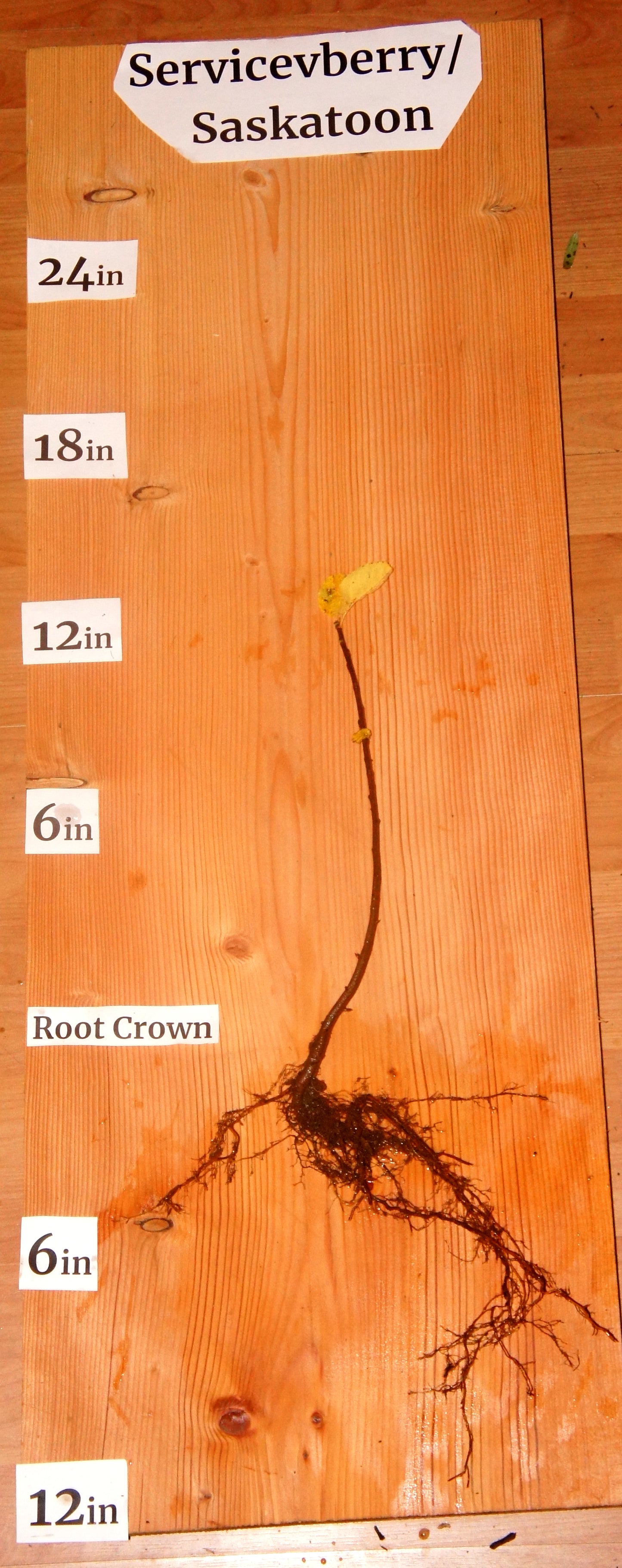Serviceberry/Saskatoon (Amelanchier alnifolia)
Serviceberry/Saskatoon (Amelanchier alnifolia)
Couldn't load pickup availability
Why We Grow It
Why We Grow It
Saskatoons are an invaluable addition to food forests and permaculture systems, providing nutritious fruit for humans and wildlife while enhancing biodiversity. Their deep root systems help stabilize soil, making them ideal for erosion control and marginal land restoration. The shrub's early blossoms support pollinators, and its adaptability to various conditions ensures reliable growth in challenging environments. With minimal maintenance and copious yields, Saskatoons are a key species for creating productive landscapes.
How the Plant Grows
How the Plant Grows
Saskatoons grow as multi-stemmed shrubs, forming dense thickets over time. In early spring, they produce showy white blossoms that are among the first to appear, signaling the start of the growing season. By mid-summer, clusters of dark purple, sweet-tart berries ripen, attracting birds and wildlife. The shrubs require minimal pruning and are naturally tough, often bouncing back robustly even after damage from wildlife or harsh weather.
Plant Size
Plant Size
Size at Maturity- Shrub layer. Grows to 6-12 feet tall and 4-8 feet wide.
Current Size- Large 1'-2', 2 year old seedling
Medium 6"-12", 1 year old seedling
Additional Info
Additional Info
Saskatoon berries hold a prominent place in North American fruit breeding, especially among Indigenous peoples who valued them as a staple food. The berries were often dried or incorporated into pemmican for winter storage. Modern uses include jams, jellies, pies, and wines, showcasing their culinary versatility. In food forestry and agroforestry systems, Saskatoons are celebrated for their multi-seasonal appeal—offering nectar-rich blossoms for pollinators in spring, nutritious fruit in summer, and vibrant red-orange foliage in fall.
Saskatoon, also known as Serviceberry, Juneberry, shadblow and many others is a culturally significant perennial shrub prized for its delicious, blueberry-like fruit and often enough for its ornamental value. A resilient and adaptable plant, it thrives in cold climates, offering abundant yields of superfood berries for wildcrafters and cultivators alike. Its early spring blossoms, vibrant fall foliage, and wildlife appeal make it a standout in any integrated landscape.
Seed Source
Our seed source for this year's saskatoon crop came from stout super productive bushes located in a massive avalanche path. So they can definitely take disturbance and cold temps.
Share





Plant Highlights
-

Water
Moderate water needs; drought-tolerant once established but benefits from consistent moisture during establishment and fruiting.
-

Pollination
Self-fertile but benefits from cross-pollination with other serviceberries for larger yields.
-

Soil
Thrives in well-drained loamy soils, tolerates a range of soils from sandy to clay, with slightly acidic to neutral pH (5.5-7.5).
-

Years to Bear
Begins producing fruit in 2-4 years after planting.
-

Hardiness
Zone 2, tolerating temperatures as low as -45°C
-

Solar
Grows in partial shade to full sun, with optimal fruit production in full sun.
Subscribe to our emails
Lots of Free Growing Info. Be the first to know about new plants and exclusive discounts.











